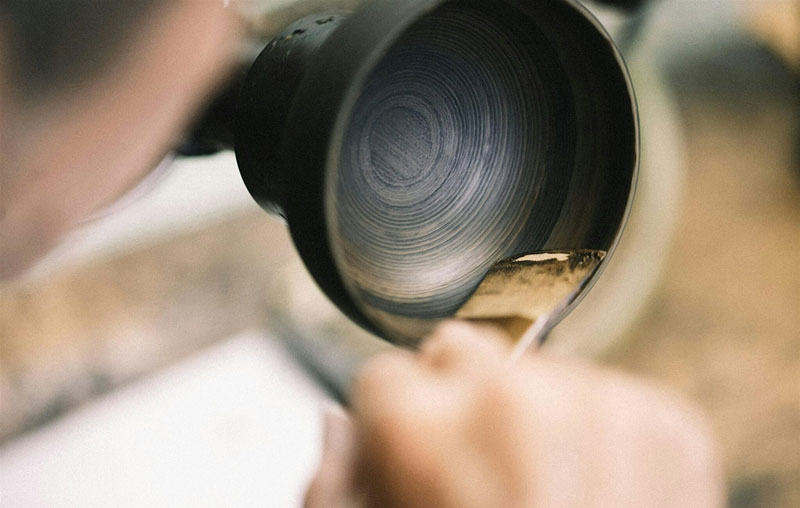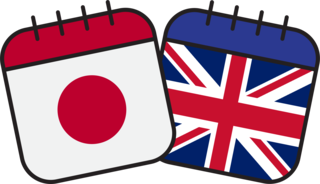
The Future of Wajima Nuri: Survival and Recovery from the 2024 Noto earthquake
- 2 November 2024
- 13:00 - 14:15
- The Hall, Japan House London, 101-111 Kensington High Street, London, W8 5SA
- https://www.japanhouselondon.uk/whats-on/the-future-of-wajima-nuri-survival-and-recovery/
- +44 (0)20 7932 7100
- info@japanhouselondon.uk
- Tweet
Wajima, on the Noto Peninsula, has long been a centre of urushi (lacquer) production. Its lacquerware, known as Wajima nuriis nationally recognized as an important intangible cultural property. Distinguished by its durable undercoating and its complex production process, Wajima nuritypically undergoes over one hundred intricate stages involving a specialized division of labour before completion.
However, the earthquake which struck the region on 1 January 2024 and the more recent severe flooding, has devastated the community and its craftspeople, casting uncertainty over the future of the industry. This event, held as part of Asian Art in London, delves into the current state of Wajima’s lacquer industry and the significant challenges it now faces.
Yamada Masami, Curator for Japan at the Victoria and Albert Museum, provides a detailed overview of the difficulties confronting Wajima, including the relocation of some artisans to the prefectural capital of Kanazawa. Her talk is followed by a conversation with four master urushi artists participating online from Japan —Kamata Katsuji, Wakamiya Takashi, Shibayama Yoshinori, and Murose Tomoya—who discuss their experiences and perspectives on Wajima. The discussion explores why some chose to stay in Wajima or relocate, the activities of the Wajima Lacquerware Youth Association, and how to support the region long-term. A Q&A session follows.
The event is organized in collaboration with Asian Art in London and includes an introduction by Simon Pilling, Director at Asian Art in London.
Please note that filming and photography may take place at this event. Photos and footage of the event may then be used to promote Japan House London, helping more people to discover what we offer. If you have any concerns, please contact us online or contact a member of the team on site.
The event starts at 13:00 and last for around 1 hour 15 minutes.
Image: ©Tatsuki Wakamiya
About the speakers:
KamataKatsuji
Kamata Katsuji was born in Tokyo in 1977. After graduating from the crafts course in the Department of Fine Arts, Tohoku University of Art and Design, he joined the Ishikawa Prefectural Wajima Institute of Lacquer Arts. He undertook further training under master urushi artist Akagi Akito. Kamata became independent in 2006 and has since focused on solo exhibitions. His first encounter with urushiduring his university years led him to relocate to Wajima, where he produces a range of vessels using the kanshitsu (dry urushi) technique.
Wakamiya Takashi
Wakamiya Takashi was born in Wajima, Ishikawa Prefecture, in 1964. Wakamiya entered the world of urushi at the age of 20 and currently leads the collective of urushiartisans known as Hikoju Makie. In 2014, he was appointed a Cultural Envoy by the Agency for Cultural Affairs, promoting urushi culture in Europe, Asia, and the Middle East. He is consistently engaged in research, development, and educational activities related to urushi techniques. Additionally, Wakamiya actively seeks to expand the market for lacquerware and to promote it internationally.
Shibayama Yoshinori
Shibayama Yoshinori was born in Kanazawa, Ishikawa Prefecture, in 1975. After completing his studies at the Ishikawa Prefectural Wajima Institute of Lacquer Arts, Shibayama apprenticed under Living National Treasure Nishi Katsuhiro before becoming independent. As a chinkin artist, he has demonstrated his craft internationally and held exhibitions in Australia, the UK, and the US.Chinkin is a decorative technique of Wajima lacquerware which involves incising patterns on urushi surfaces, filling them with urushi, and finishing with gold leaf or powder.
Murose Tomoya
Murose Tomoya was born in Tokyo in 1982. After studying urushi techniques in Wajima for three years, Murose returned to Tokyo to train under his father, ‘Living National Treasure’ Murose Kazumi, learning about maki–e and cultural property conservation and restoration. His grandfather, also an urushi artist, was originally from Wajima. Currently, Murose is an active artist, a full member of the Japan Kogei Association, and director of the Mejiro Institute of Urushi Research and Restoration, where he promotes urushi culture.
About the chairs:
Yamada Masami
Yamada Masami is Curator in the Victoria and Albert Museum’s Asia Department. She has particular responsibility for the collections of Japanese lacquerware, netsuke, ukiyo-ewoodblock prints and contemporary craft. Her current area of research is contemporary craft, particularly the work of urushi lacquer artists. In 2022, she received the Sir Nicholas Goodison Award for Contemporary Craft from the Art Fund to further develop the Museum’s internationally renowned Japanese lacquer collection.
Simon Pilling
Simon Pilling is a director of Asian Art in London – an annual programme that promotes London as a centre of excellence in the arts of Asia. Each October/November in and around Central London an intensive programme of specialised exhibitions, auctions and lectures is offered by its Participants – respected dealers, major auction houses and cultural institutions specializing in Asian Art. Simon Pilling is specializing in the arts of Japan, with particular focus onurushi.
Visit the Asian Art in London website for more information and to view the 2024 guidebook.
Booking Essential | Admission Free
